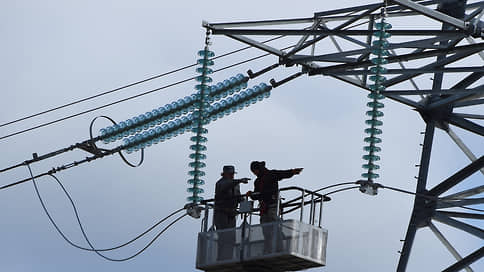Electricity consumption in Russia in 2023 increased by 1.4%
[ad_1]

Electricity consumption in Russia continues to increase: at the end of 2023, the figure increased by 1.4%. Demand has increased in all energy systems of the country, but most noticeably in the Far East, Siberia and the South. Consumption increased by machine builders and metallurgists, the military industry, Russian Railways, as well as southern ports, experts say. In 2023, the growth of electricity production also accelerated, which analysts attribute to an increase in its flows to new territories after the destruction of the Kakhovskaya hydroelectric station.
The System Operator (SO, energy system dispatcher) has published part of the data on the operation of the Unified Energy System (UES) of Russia for 2023. Total electricity consumption in the UES increased again: the figure increased by 1.4% year-on-year, exceeding 1.121 trillion kWh. Consumption increased in all interconnected energy systems (IPS). The report was compiled “without taking into account the territories of the new constituent entities of the Russian Federation,” the CO document says. Last year, the energy systems of the LPR, DPR, Kherson and Zaporozhye regions were included in the IPS of the South.
New territories could have an impact on the growth of electricity production. Last year, judging by CO data, the increase in output accelerated: at the end of 2022, the figure increased by 0.6% year-on-year, and in 2023 – by 1.1%, to 1.134 trillion kWh. Output grew only slightly in 2022 because Russia stopped supplying electricity to the EU in the middle of the year. In 2023, the decline in commercial exports continued, so the most likely reason for the increase in output in the Unified Energy System of Russia is an increase in energy supplies to the Kherson and Zaporozhye regions after the destruction of the Kakhovka hydroelectric power station, Kommersant’s interlocutors in the expert community, who wished to remain anonymous, believe.
Nevertheless, the balance of electricity flows (exports from the Unified Energy System of Russia minus imports) still fell in 2023.
The figure amounted to 12.4 billion kWh, which is approximately 18% less than the volume for 2022 and almost 7% lower than the volume for the pandemic year 2020. Accurate data on commercial exports from the Russian Federation are no longer published. Regulators predicted commercial exports by the end of 2023 at the level of 10 billion kWh.
The head of the IPEM special projects department, Alexey Faddeev, believes that the growth in demand for electricity in 2023 is mainly associated with the growth of manufacturing industries, primarily machine-building and metalworking. According to Rosstat, production in manufacturing industries over the 11 months of last year increased by 7.5% year on year, he notes. The UES of the South has always been characterized by high rates of consumption growth: in 2016–2023, the figure there increased by a quarter. Growth factors are stable, Mr. Faddeev continues: population growth, development of agriculture, industry and transport (including transshipment in ports). He assumes that in 2024, demand growth in Russia will continue, but its pace will be lower.
Based on the data from the CO report, an increase in electricity consumption in 2023 is observed in all energy systems of Russia, and the main contribution to the total increase in electricity consumption, as last year, was made by the Far East, Siberia and the south of the country, notes Sergei Sasim, director of the Center for Electric Power Research at the Higher School of Economics. . Thus, in the IPS of the East, consumption increased by 3.3% year-on-year, reaching 45.9 billion kWh, in the IPS of Siberia – by 2.3%, to 229.9 billion kWh, and in the IPS of the South – by 2.2%, up to 113.5 billion kWh. The share of these energy systems in the total electricity consumption of the UES of Russia is steadily increasing, while the share of the remaining UES either does not change or decreases, he calculated.
The growth in electricity consumption in Siberia and the Far East in 2023, according to Sergei Sasim, is due to the implementation of large investment projects by metallurgical enterprises, the construction of the Eastern training ground of Russian Railways, the development of relations with China and the associated increase in exports, increased utilization of enterprises in the military-industrial complex and the growth of household consumption. “Russia, apparently, has adapted to the unfavorable foreign economic situation,” the expert believes. “At the same time, the dynamics of electricity consumption are significantly influenced by government spending and investment projects of state corporations.” Most likely, in 2024 this logic will continue and moderate growth in electricity consumption will continue, he adds.
[ad_2]
Source link





